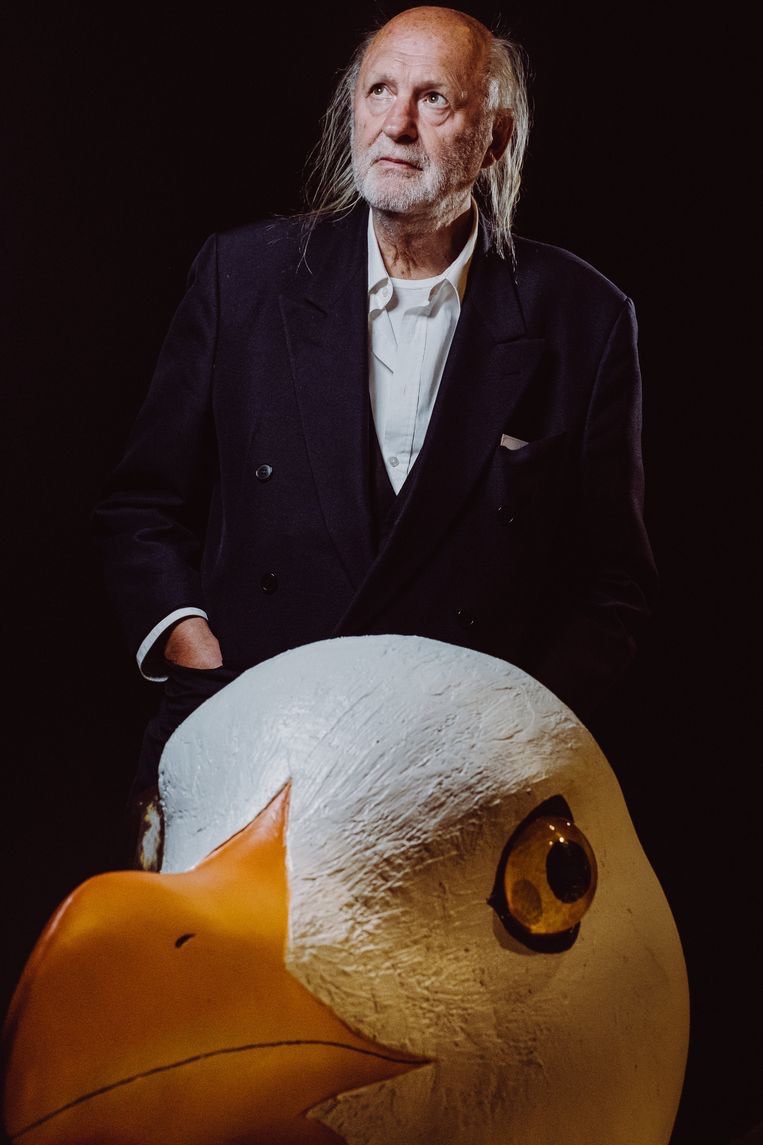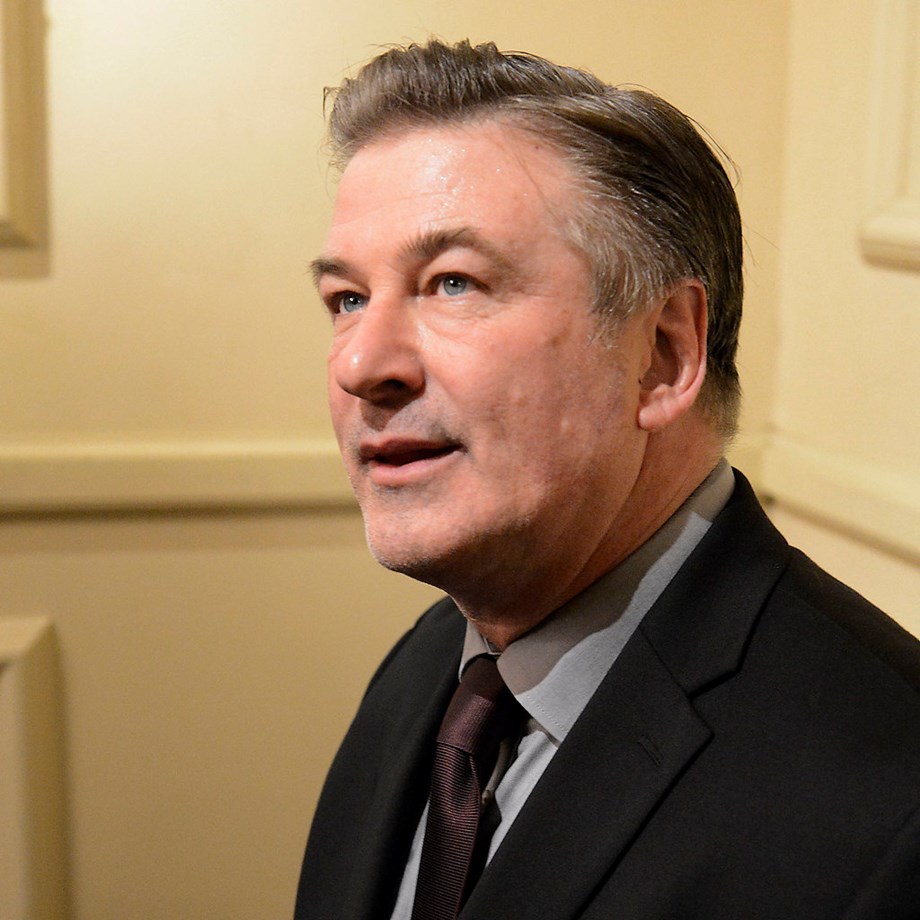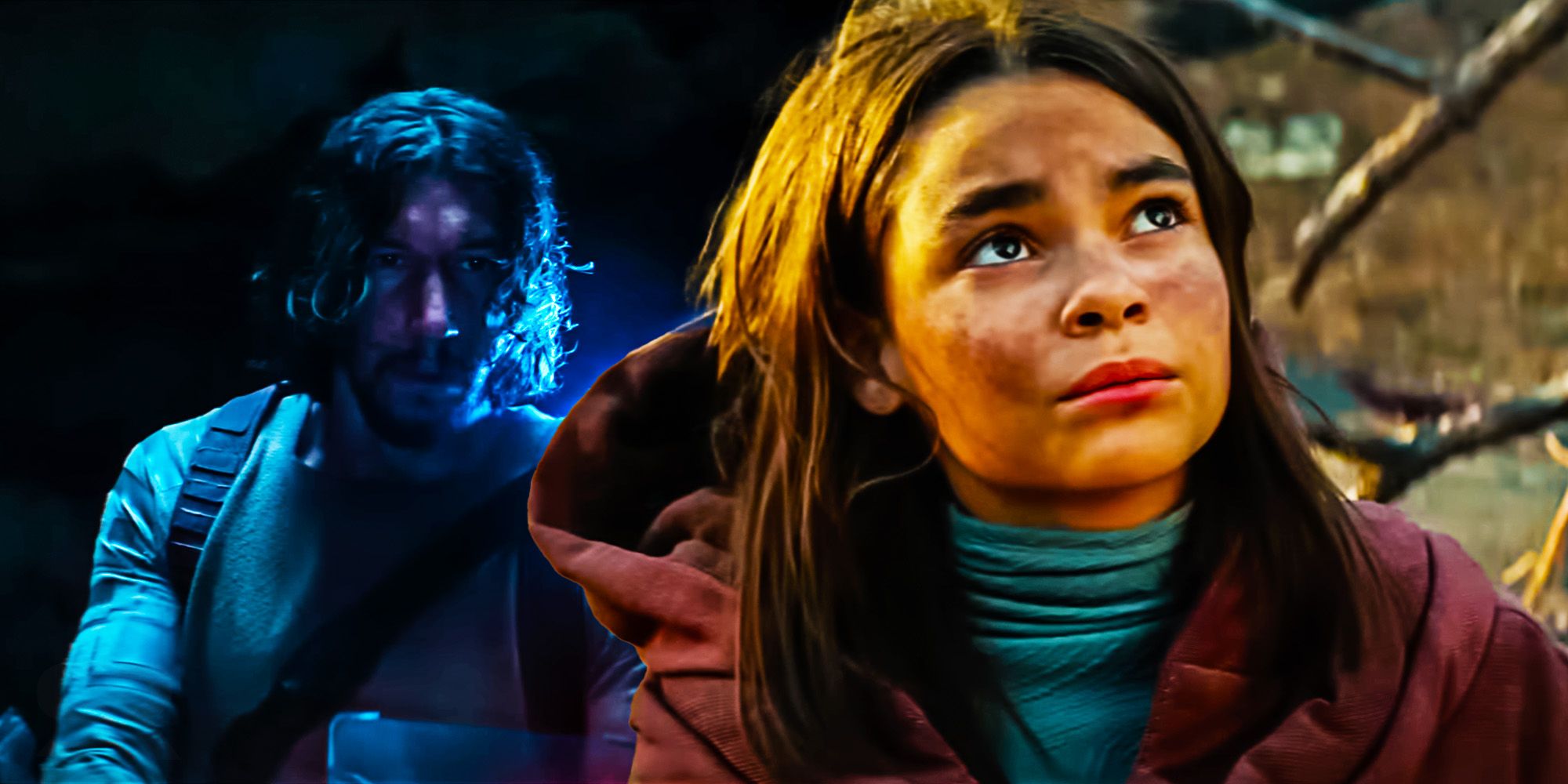
‘Rust’ Movie Set Shooting: Key Developments From the Investigation
transcript
transcript
More Suspected Live Rounds Were Found on ‘Rust’ Set, Sheriff Says
Investigators in New Mexico recovered the lead projectile fired by Alec Baldwin that killed the film’s cinematographer and wounded its director, the revolver they believe fired the shot, as well as more possible live rounds of ammunition.
-
Halyna Hutchins, the director of cinematography, and Joel Souza, the director, had been shot while rehearsing a scene on the movie “Rust.” During the initial investigation, it was determined that actor-producer Alec Baldwin was the person that fired the weapon. We identified two other people that handled and/or inspected the loaded firearm prior to Baldwin firing the weapon. These two individuals are armorer Hannah Reed-Gutierrez and assistant director, David Halls. All three individuals have been cooperative in the investigation and have provided statements. We have collected about 600 items of evidence. These include, but are not limited to, three firearms, approximately 500 rounds of ammunition and several pieces of clothing and accessories. We believe that we have in our possession the firearm that was fired by Mr. Baldwin. This is the, this is the firearm we believe discharged the bullet. We also believe that we have the spent shell casing from the bullet that was fired from the gun. The actual lead projectile that was fired has been recovered from the shoulder of Mr. Souza. We have recovered what we believe to be possible additional live rounds on set. All the previous mentioned items, along with other items of evidence, will be submitted to the F.B.I. crime lab in Quantico, Va., for analysis. The investigation will continue and if the Sheriff’s Office determines during our investigation a crime has occurred and probable cause exists, arrest, an arrest or arrests, will be made and charges will be filed. I think there was some complacency on this set, and I think there are some safety issues that need to be addressed by the industry, and possibly by the State of New Mexico. But I’ll leave that up to the industry and the state to determine what those need to be.

Sheriff Adan Mendoza of Santa Fe County said at a news conference on Wednesday that the lead projectile Alec Baldwin fired from a revolver on the “Rust” film set, killing the film’s cinematographer and wounding its director, was recovered from the director’s shoulder, and added that investigators believe they recovered more live rounds on the set.
Investigators also believe they have recovered the Colt revolver that fired the shot, Sheriff Mendoza said, as well as about 500 rounds of ammunition from the set. The ammunition recovered included a mixture of blanks, dummy rounds and what the sheriff’s department suspects to be live ammunition, which it will send to the F.B.I. crime lab for analysis.
“We have recovered what we believe to be possible additional live rounds on set,” he said.
The sheriff declined to comment on how live ammunition got there; typically, live rounds are not allowed anywhere on film sets. He described the gun that fired the fatal shot as a .45 Long Colt revolver, made by the Italian manufacturer F.lli Pietta.
The shooting happened during a rehearsal for a scene in “Rust,” a Western in which Mr. Baldwin was playing an outlaw. Mr. Baldwin was practicing a scene with a gun he had been told did not contain live ammunition on the set when it went off, killing the cinematographer, Halyna Hutchins, and wounding the director, Joel Souza.
Sheriff Mendoza used the words “lead projectile” to describe what was recovered from Mr. Souza’s shoulder, and said it was apparently the same round that had killed Ms. Hutchins. Asked if it was an actual bullet that had been fired — and not a blank — he said, “We would consider it a live round, a bullet, live, because it did fire from the weapon and obviously caused the death of Ms. Hutchins and injured Mr. Souza.”
Over the past few days, questions have been raised about how the fatal shooting could have occurred if safety protocols had been followed properly.
“I think there was some complacency on this set,” Sheriff Mendoza said. “Anytime firearms are involved, safety is paramount.”
The Santa Fe County district attorney, Mary Carmack-Altwies, said at the news conference that the inquiry was continuing, and that criminal charges were still possible. “If the facts and evidence and law support charges, then I will initiate prosecution at that time,” she said.
Sheriff Mendoza said there were 16 people in the vicinity of where the fatal shooting took place, a set depicting a 19th-century wooden church. In total, there were about 100 people on set, he said.
All three people who had handled the gun were cooperating with law enforcement, Sheriff Mendoza said. According to court papers, the film’s armorer, Hannah Gutierrez-Reed, prepared a table on which three guns sat; an assistant director on the film, Dave Halls, grabbed a revolver and declared it to be a “cold gun,” meaning that it had no live ammunition inside and was safe to handle. Then, Mr. Halls handed the gun to Mr. Baldwin, a detective wrote in an affidavit used to obtain a search warrant.
Mr. Baldwin had been sitting in a wooden church pew, rehearsing a scene that involved “cross drawing” a revolver and pointing it toward the camera lens, Mr. Souza told a detective investigating the shooting, according to court papers. When the gun went off, Ms. Hutchins was struck in the chest and Mr. Souza was wounded in the shoulder.
Mr. Baldwin is an “active part of this investigation,” the sheriff said.
Detectives said that they recovered three revolvers, spent casings and ammunition — in boxes, loose and in a fanny pack — while executing a search warrant on the set, according to an inventory of the items. The inventory did not specify what kind of ammunition was found on the set.
Dave Halls, the assistant director on the film “Rust,” told an investigator that he had not checked all of the rounds in the gun he handed to Alec Baldwin, as he should have, according to an affidavit released Wednesday.
He said that the film’s armorer, Hannah Gutierrez-Reed, had opened the gun for him to inspect, according to the affidavit.
“He advised he should have checked all of them, but didn’t, and couldn’t recall if she spun the drum,” according to the affidavit. He said he remembered seeing only three rounds.
In the days since the shooting on the set, which occurred on Thursday — the actor Alec Baldwin shot the cinematographer and the director with a gun he had been told did not contain live ammunition — detectives from the Santa Fe County Sheriff’s Office have been examining the role that Mr. Halls and others on the set had in the incident.
The film’s cinematographer, Halyna Hutchins, 42, was killed and its director, Joel Souza, 48, was wounded.
It was Mr. Halls who handed Mr. Baldwin the firearm during rehearsals inside the set of a church and said that it was a “cold gun,” according to court documents, indicating that the firearm contained no live rounds and was safe for Mr. Baldwin to handle. Mr. Baldwin then began rehearsing a scene that involved “cross drawing” the revolver and pointing it toward the camera lens, according to the affidavit, when the gun went off.
After the shooting, Mr. Halls said he picked up the gun from a pew inside the church and took it to Ms. Reed. When she opened it, he said, according to the affidavit, he could see “at least four dummy casings with the holes on the side, and one without the hole. He advised this did not have the cap on it and was just the casing.” Dummy rounds are sometimes identified by a pierced hole on the side.
Describing the safety protocols on the set, Mr. Halls said Ms. Gutierrez typically opened guns for him to inspect. “I check the barrel for obstructions, most of the time there is no live fire, she (Hannah) opens the hatch and spins the drum, and I say cold gun on set,” he said in an interview with the investigator, according to the affidavit. It was not clear what he meant by the term “live fire.”
Mr. Halls is an industry veteran who has worked on films including “Fargo” and “The Matrix Reloaded.” As assistant director, he was one of the people responsible for safety on the set of “Rust.” Mr. Halls didn’t respond to several attempts to reach him.
In the frantic moments after the shooting, the assistant director was singled out by a script supervisor who called 911 with a desperate plea for help. “We’ve had two people accidentally shot on a movie set,” the script supervisor, Mamie Mitchell, told the 911 operator. Then Ms. Mitchell described how it was the assistant director’s responsibility to make sure such mishaps never happen. “He’s supposed to check the guns,” Ms. Mitchell said in the call.
He has been the subject of complaints from various film professionals over the years. The complaints, which largely revolve around his regard for safety protocols and on-set behavior, are fueling questions about the New Mexico production, which had at least two accidental gun discharges just days before the fatal shooting. He was fired from the set of an earlier movie, “Freedom’s Path,” in 2019, after a gun unexpectedly discharged, causing a minor injury to a crew member, the production company, Rocket Soul Studios, said in a statement on Monday.
Hannah Gutierrez-Reed, the armorer on the “Rust” film, told a detective that the day Alec Baldwin fatally shot the movie’s cinematographer, she had checked dummy rounds and ensured they were not “hot,” according to an affidavit released on Wednesday. When the crew took a break for lunch, she told the detective, the ammunition was left out on a cart on the set.
Dummy rounds contain no gun powder or primer cap; they are simply used as stand-ins for real bullets on camera.
It was Ms. Gutierrez-Reed who had set up a gray two-tiered cart outside the set from which Dave Halls, the assistant director, took the firearm and handed it to Mr. Baldwin just before the shooting, according to court papers.
On the day of the shooting, the crew had been rehearsing a scene, then broke for lunch before returning to that scene. Ms. Gutierrez-Reed told the detective that at the start of the lunch break, the firearms were secured inside a safe on a “prop truck.” During that time, she said that ammunition was kept in the truck as well as on a cart on set, where they were “not secured,” according to the affidavit.
Ms. Gutierrez-Reed told an investigator that no live ammunition “is ever kept on set.”
After lunch, the film’s prop master, Sarah Zachry, took the firearms from the safe and handed them to Ms. Gutierrez-Reed, the armorer, according to Ms. Gutierrez-Reed’s account to the detective.
“She advised there are only a few people that have access and the combination to the safe,” the affidavit said.
During the course of filming, Ms. Gutierrez-Reed told the detective that she had handed the gun to Mr. Baldwin a couple of times and also to Mr. Halls.
On a podcast posted last month, Ms. Gutierrez-Reed, 24, who also goes by Hannah Reed and Hannah Gutierrez, said that she had just finished filming her first movie as head armorer in a western called “The Old Way,” starring Clint Howard and Nicolas Cage, that is set for release next year.
“I was really nervous about it at first, and I almost didn’t take the job because I wasn’t sure if I was ready, but doing it, it went really smoothly,” Ms. Gutierrez-Reed said of that movie in the podcast, “Voices of the West,” on which the hosts discuss old western films and television shows. She is the daughter of Thell Reed, a shooting expert and a consultant to the movie industry who has trained prominent actors in handling firearms.
“Dad’s been teaching me a little bit every now and then about guns since I was 16,” Ms. Gutierrez-Reed said on the podcast, “but I think we really got into the stuff more just really in the last couple of years.”
Ms. Gutierrez-Reed did not respond to several requests for comment.
On film and television sets, real firearms are routinely used while cameras are rolling, but injuries of any kind as a result of firearms are rare. The reason is that safety protocols for firearms on sets are well established and straightforward.
Weapons must be tightly managed by an armorer, sometimes credited on films as a “weapons master,” who holds various government-issued permits. Cast members should be trained in gun safety in advance. And guns should never be pointed directly at anyone, especially in rehearsals but even during actual filming, since camera trickery can be used to compensate for the angle.
And no live ammunition, ever.
“Protocol had to have been broken,” said Daniel Leonard, an associate dean of Chapman University’s film school who specializes in set procedures. “We will have to see what the details are, but the industry has a very specific set of guidelines to follow to prevent something like this from happening.”
Some weapons used on set are rubber props (used for shots when actors are far in the distance) and others are airsoft guns that fire nonlethal pellets.
Studios prefer to digitally create the actual firing in postproduction whenever possible, but sometimes it is not. Even in a filmmaking age where visual-effects artists use computers to convincingly create disintegrating cities, it can be difficult to replicate the weight and recoil of a real gun, studio executives say.
Depending on the complexity of the scene, effects wizardry is also expensive, Mr. Leonard noted, and independently financed movies like “Rust,” the film that Alec Baldwin was making in New Mexico, operate on shoestring budgets.
Law-enforcement officials in Santa Fe County, N.M., held a news conference Wednesday on their investigation into what happened last week when the actor Alec Baldwin was rehearsing on a film set with a gun he had been told did not contain live ammunition when it went off, killing the film’s cinematographer and wounding its director.
Here is an overview of some of what has emerged about the case:
-
The shooting happened during a rehearsal for a scene in “Rust,” a Western where Mr. Baldwin was playing an outlaw helping his grandson. Mr. Baldwin was holding a gun being used as a prop when it fired, striking the cinematographer, Halyna Hutchins, in the chest and the director, Joel Souza, in the shoulder. Ms. Hutchins, 42, was airlifted to a hospital in Albuquerque, where she died. Mr. Souza, 48, was taken by ambulance to a hospital in Santa Fe and was released on Friday.
-
In an affidavit accompanying a request for a search warrant, Detective Joel Cano of the Santa Fe County Sheriff’s Office said that Dave Halls, an assistant director on the set, had gone outside and taken the gun off a cart, where it had been placed by the film’s armorer, Hannah Gutierrez-Reed. Mr. Halls handed it to Mr. Baldwin, who was rehearsing inside on the set of a church, according to the affidavit, and said it was a “cold gun,” indicating that it contained no live rounds and was safe for Mr. Baldwin to handle.
-
Mr. Baldwin has cooperated with the investigation, including going to the Santa Fe County Sheriff’s Office after the shooting to provide a statement and answer questions. No criminal charges against him or anyone else have been announced in the case.
-
When the shooting occurred Mr. Baldwin had been sitting in a wooden church pew, rehearsing a scene that involved “cross drawing” a revolver and pointing it toward the camera lens, Mr. Souza said, according to the affidavit. The director said he heard what “sounded like a whip and then loud pop” and then saw Ms. Hutchins grabbing her midsection and starting to stumble backward. Then he noticed he was bleeding from his shoulder.
Shortly before the cinematographer Halyna Hutchins was fatally shot on a film set in the foothills of New Mexico, she smiled as she recorded herself riding a chestnut horse through the desert brush.
“One of the perks of shooting a western is you get to ride horses on your day off,” Ms. Hutchins wrote last week in an Instagram post.
On Thursday, Ms. Hutchins, 42, was killed when the gun that the actor Alec Baldwin was rehearsing with on the set of “Rust,” which he had been told contained no live ammunition, went off. Ms. Hutchins, who was the film’s director of photography, was struck in the chest and died after being flown to the University of New Mexico Hospital in Albuquerque. The film’s director, Joel Souza, was injured in the shooting and was released from a hospital.
Mr. Souza said in a statement on Saturday that he was “gutted” by the loss of Ms. Hutchins, writing that she was “kind, vibrant, incredibly talented, fought for every inch and always pushed me to be better.”
Ms. Hutchins’s husband, Matt Hutchins, wrote in a tweet on Friday night that his wife “inspired us all with her passion and vision, and her legacy is too meaningful to encapsulate in words.”
Ms. Hutchins grew up on a Soviet military base in the Arctic Circle, where, according to her personal website, she was “surrounded by reindeer and nuclear submarines.” She studied economics at the Agrarian University in Ukraine before switching to a journalism program at Kyiv National University. She later attended the American Film Institute Conservatory in Los Angeles.
On Friday, Mr. Baldwin released a statement on social media saying, “There are no words to convey my shock and sadness regarding the tragic accident that took the life of Halyna Hutchins, a wife, mother and deeply admired colleague of ours.” He said that he was in contact with Ms. Hutchins’s husband, adding, “My heart is broken for her husband, their son, and all who knew and loved Halyna.”
Among filmmakers in the United States, Ms. Hutchins was remembered as a skilled cinematographer with an artistic vision who was deeply committed to her work.
Adam Egypt Mortimer, the director of the 2020 superhero action movie “Archenemy,” on which Ms. Hutchins worked as director of photography, wrote on Twitter that Ms. Hutchins was a “brilliant talent,” pointing to a series of posts he made last year about Ms. Hutchins’s work. He had written that Ms. Hutchins’s “tastes and sensibility of what is cinematic were a huge asset for executing our style” and that she had been visually inspired by Jim Steranko comics.
“She was a true wartime sister,” Mr. Mortimer wrote, “fighting the battles to make this thing look amazing despite the unrelenting limitations and catastrophes.”
Hours before the fatal shooting on the “Rust,” about six members of the camera crew walked off the set because of issues around payment and housing, according to court documents associated with the case.
Joel Souza, the film’s director, said in an interview with a detective from the Santa Fe County sheriff’s department that the workday had started late on Thursday because they had to find another camera crew to help film, according to an affidavit used to obtain a warrant to search the set.
Three former members of the film’s crew, who asked not to be named out of fear that their future employment in the industry could be affected, said the crew had complained to the film’s producers about extended delays to some of their paychecks and about the production’s refusal, at times, to book them hotel rooms in Santa Fe, near the set. Their concerns went unaddressed, the crew members said, and by Oct. 20, several of them had filed resignation letters after one of them was denied a hotel room to sleep in after a long day.
The crew members also had concerns about safety on set. On Oct. 16, days before the fatal shooting, there were at least two accidental gun discharges on set, they said, prompting a complaint to a supervisor about safety practices. The discharges that day were inside a cabin used as a set location, and Halyna Hutchins, the cinematographer who was killed Thursday, was among the production team members inside, crew members said.
“Though we were not made aware of any official complaints concerning weapon or prop safety on set, we will be conducting an internal review of our procedures while production is shut down,” the movie’s production company, Rust Movie Productions LLC, said in a statement. “We will continue to cooperate with the Santa Fe authorities in their investigation and offer mental health services to the cast and crew during this tragic time.”
Accidents on movie and television sets have occurred with some regularity over the last several decades, including stuntmen and stuntwomen being injured during action sequences or actors getting killed when props malfunction.
There have been at least 194 serious television- and film-set accidents in the United States from 1990 to 2014, and at least 43 deaths, according to The Associated Press.
In 1993, Brandon Lee, an actor and the son of the martial-arts star Bruce Lee, died during the filming of “The Crow,” after being shot at with a gun that was supposed to fire blank cartridges. The tip of a .44-caliber bullet had become lodged in the gun’s barrel in filming a close-up scene, and dislodged when a blank cartridge was fired. The bullet pierced Mr. Lee’s abdomen, damaging several organs and lodging in his spine.
On the Los Angeles set of the “Twilight Zone” in 1982, a helicopter crash killed the actor Vic Morrow and two child actors, Renee Shinn Chen and My-ca Dinh Lee. The film’s director, John Landis, was charged with involuntary manslaughter in connection with the deaths, as were four other members of the film crew, including the helicopter pilot. (All five were acquitted in May 1987.)
In 1984, the actor Jon-Erik Hexum accidentally shot himself in the head while playing Russian roulette on the set of the television series “Cover Up.” Mr. Hexum, 26, had loaded three empty cartridges and two gunpowder-filled blanks into a high-powered handgun before firing the gun, according to a detective on the case.
Mr. Hexum sustained a fractured skull and underwent five hours of surgery. He died several days later.





